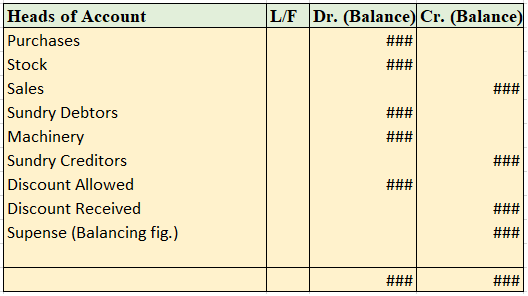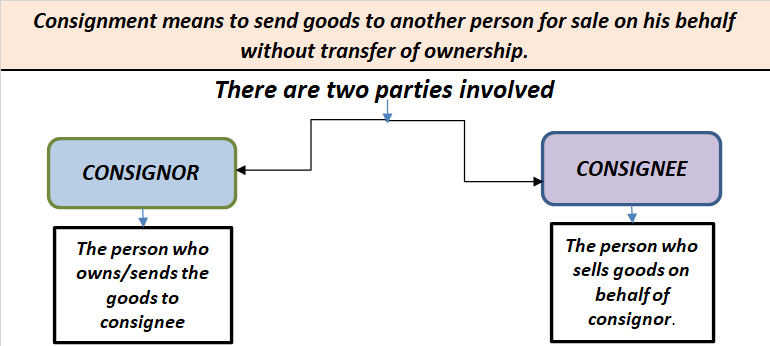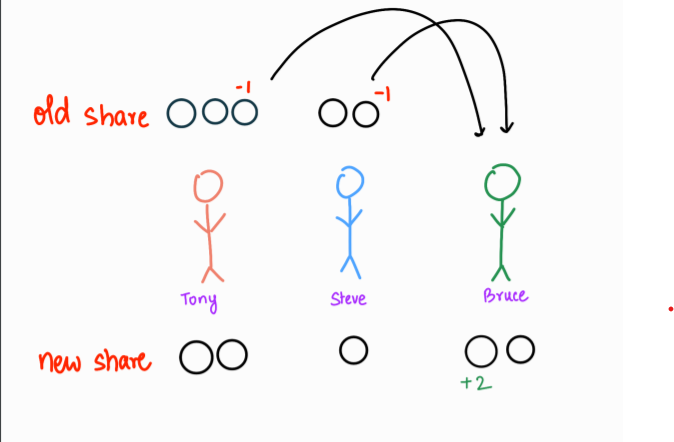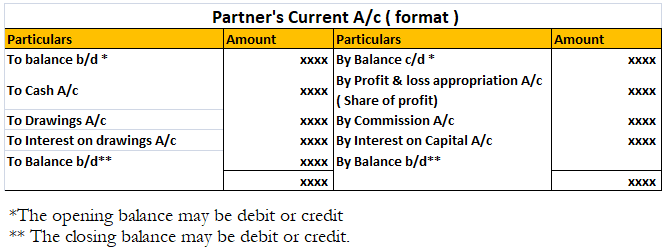There are two types of ledger accounts in the accounting system – temporary and permanent. Temporary accounts are those whose balances zero out and we do not carry forward balances to the next year. Examples are revenue and expenses accounts or nominal accounts. The balances of such accounts are traRead more
There are two types of ledger accounts in the accounting system – temporary and permanent.
Temporary accounts are those whose balances zero out and we do not carry forward balances to the next year. Examples are revenue and expenses accounts or nominal accounts. The balances of such accounts are transferred to the profit and loss account and therefore are not balanced.
Permanent accounts are those whose balances are carried forward to the next accounting year in form of opening balances. These accounts are balanced and such balances are transferred to the balance sheet. Examples are assets, liability and capital accounts or personal and real accounts.

Balancing an account means equaling both the debit and the credit side of the account. Generally, there is a difference between the accounts recorded as a carry down balance in the case of permanent accounts and as a transfer balance in the case of temporary accounts.
Balancing serves as a check to the double-entry rule of accounting.
Balanced accounts
As discussed above, the balanced accounts are shown in the balance sheet and the balancing figure for such accounts are carried forward to the next accounting period.
Unbalanced accounts
As per the above discussion, the balancing figures of unbalanced accounts are transferred to the profit and loss account and no balances are carried forward to the next accounting period.
Suppose a company Shine Ltd. has machinery costing 5,00,000 at the beginning of the accounting period and charges depreciation of 10% on the asset. The company also has creditors amounting to 50,000 at the beginning of the period and purchases goods amounting to 30,000 on credit. It has a cash balance of 95,000 at the beginning of the period and earns interest amounting to 10,000.
Following ledgers would be prepared to record the above entries:

The above ledgers can be shown as follows:

The balance of the machinery account will be shown in the balance sheet and therefore it is a balanced account.

The balance is transferred to the profit and loss account and therefore depreciation account is an unbalanced account.

The balance of creditors account will be shown in the balance sheet and therefore it is a balanced account.

The balance is transferred to the profit and loss account and therefore purchases account is an unbalanced account.

The balance of the cash account will be shown in the balance sheet and therefore it is a balanced account.

The balance is transferred to the profit and loss account and therefore interest account is an unbalanced account.
See less














Definition Goodwill is an intangible asset that places an enterprise in an advantageous position due to which the enterprise is able to earn higher profits without extra effort. For example, if the enterprise has rendered good services to its customers, it will be satisfied with the quality of its sRead more
Definition
Goodwill is an intangible asset that places an enterprise in an advantageous position due to which the enterprise is able to earn higher profits without extra effort.
For example, if the enterprise has rendered good services to its customers, it will be satisfied with the quality of its services, which will bring them back to the enterprise.
Features
The value of goodwill is a subjective assessment of the valuer.
• It helps in earning higher profits.
• It is an intangible asset.
• It is an attractive force that brings in customers to the business.
• It has realizable value when the business is sold out.
Need for goodwill valuation
The need for the valuation of goodwill arises in the following circumstances :
• When there is a change in profit sharing ratio.
• When a new partner is admitted.
• When partner retires or dies.
• When a partnership firm is sold as a going concern.
• When two or more firms amalgamate.
Classification of goodwill
Goodwill is classified into two categories:
• Purchased goodwill
• Self-generated goodwill
Purchased goodwill :
Is that goodwill acquired by the firm for consideration whether paid or kind?
For example: when a business is purchased and purchase consideration is more than the value of net assets the difference amount is the value of purchase goodwill.
Self-generated goodwill
It is that goodwill that is not purchased for consideration but is earned by the management’s efforts.
It is an internally generated goodwill that arises from a number of factors ( such as favorable location, efficient management, good quality of products, etc ) that a running business possesses due to which it is able to earn higher profits.
Methods of valuation
1. Average profit method
2. Super profit method
3. Capitalization method
Average profit method: goodwill under the average profit method can be calculated either by :
• Simple average profit method or
• Weighted average profit method
See less